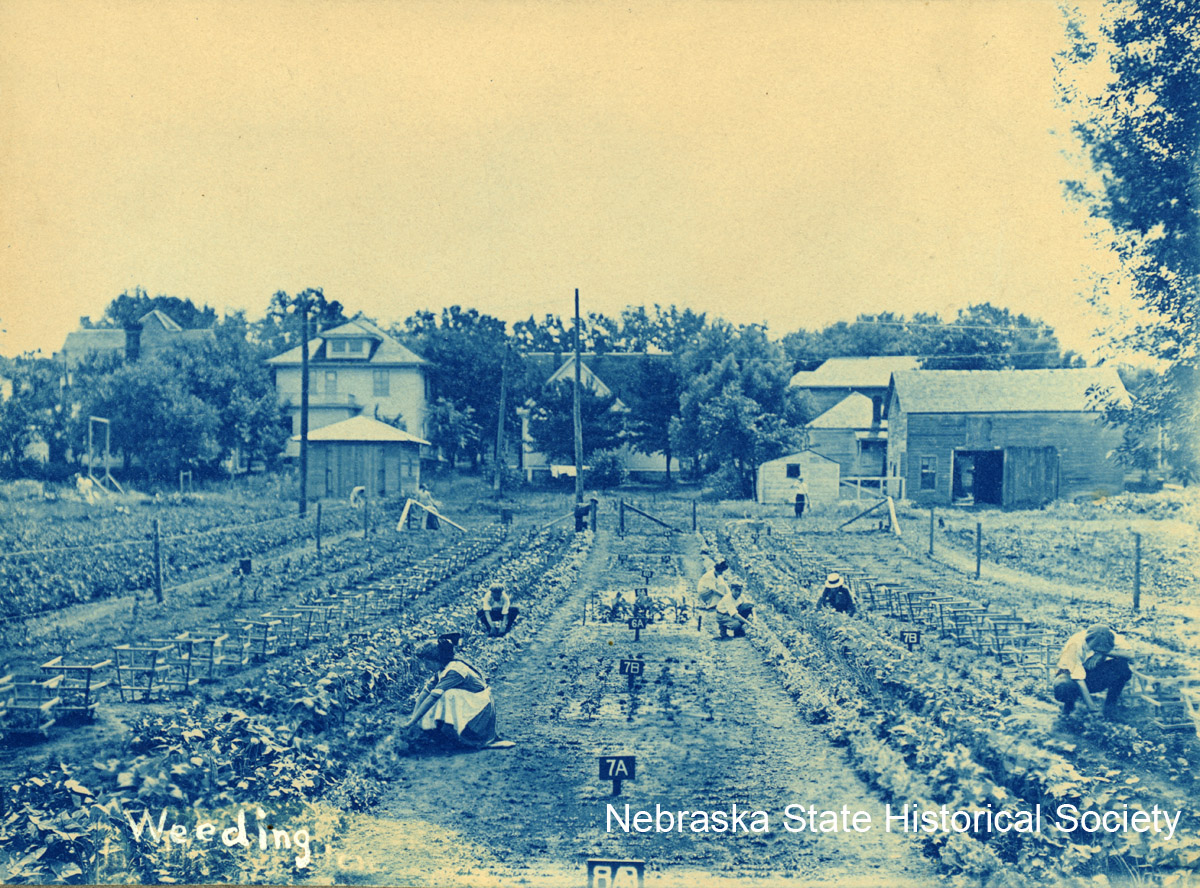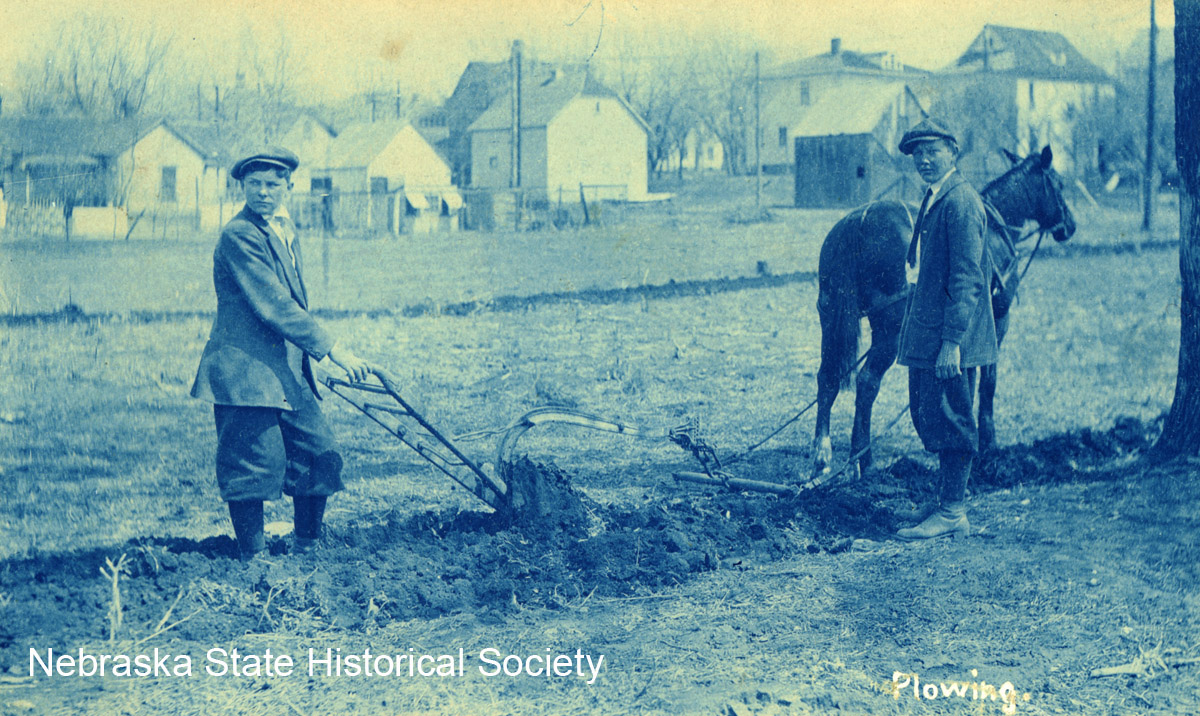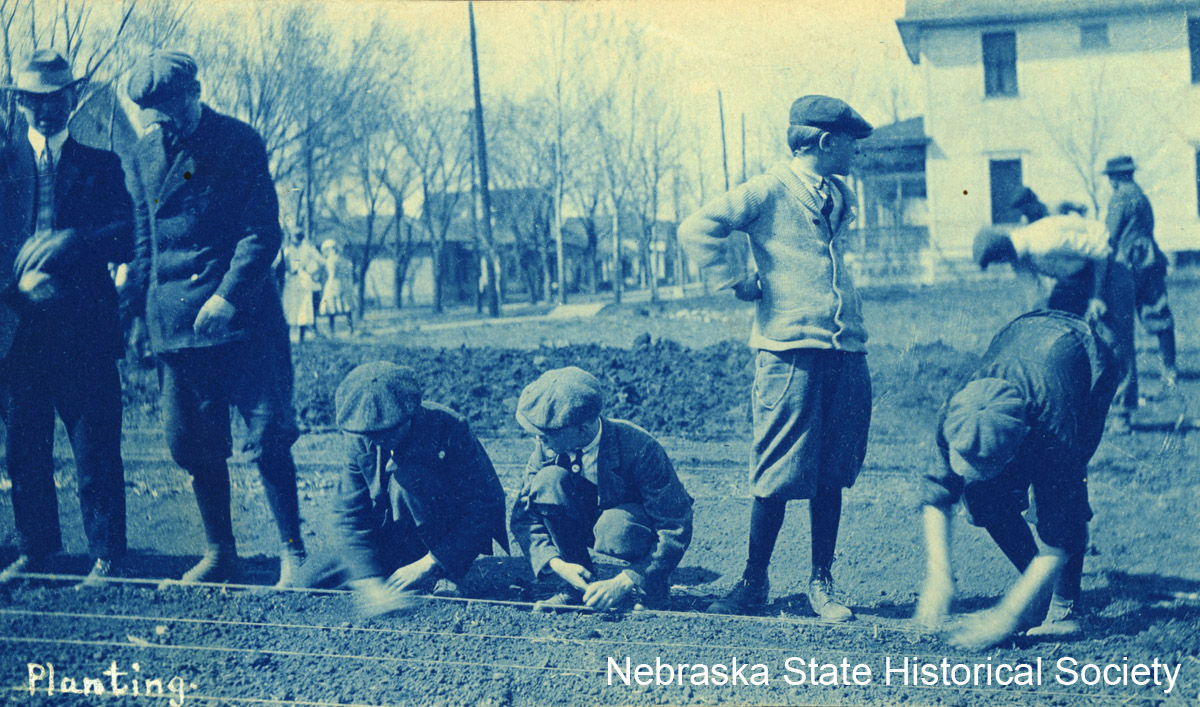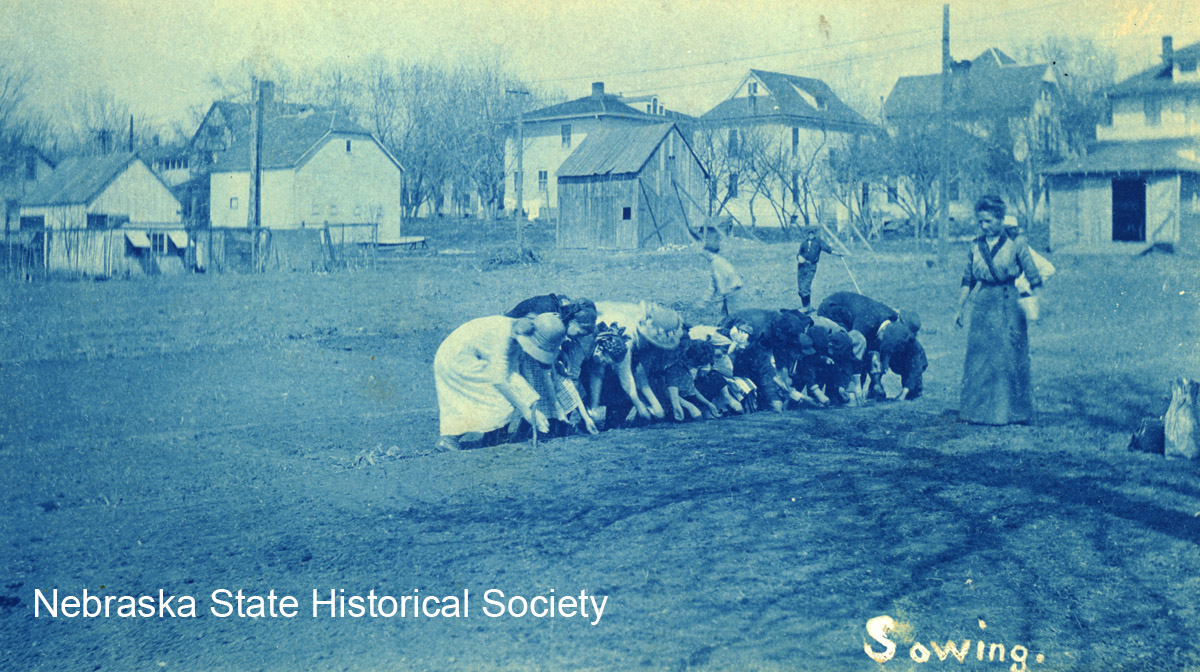
Elliot School Victory Garden (All Photos)(RG2882.PH8-2)
Do not adjust the color on your screen. These photographs really are blue. They are called cyanotypes and can be easily recognized by their uniform, bright blue color. Cyanotypes are created using light sensitive iron salts as opposed to silver salts used in more traditional black and white photograph. Sir John Herschel developed the cyanotype process in 1842 using ferric ferrocyanide (sometime called Prussian blue) and ferrous ferricyanide (also known as Turnbull’s blue). Due to their unusual blue color, cyanotypes failed to gain popularity for commercial use. They did, however, become somewhat accepted during the 1890s and early 1900s with amateur photographers who found cyanotypes easy and cheap to make. Cyanotypes were often used to proof negatives and to make photograms of leaves and plants. Architectural drawings and blue prints use a process similar to cyanotypes.
 In addition to their unusual color, cyanotypes have another surprising characteristic. When exposed to light for long periods, cyanotypes will chemically fade to a near colorless form. Surprisingly, the image will regain most of its blue color when returned to the dark.
In addition to their unusual color, cyanotypes have another surprising characteristic. When exposed to light for long periods, cyanotypes will chemically fade to a near colorless form. Surprisingly, the image will regain most of its blue color when returned to the dark.
Cyanotypes are sensitive to alkaline conditions and will fade to a very pale browns. Therefore, cyanotypes should never be stored in alkaline, buffered paper enclosures. To preserve your cyanotypes, choose unbuffered paper or archival plastic enclosures. The cyanotypes featured in this article were taken in Lincoln, Nebraska in about 1918. They capture the students of Elliot Elementary School planting and harvesting their Victory Garden during World War I. Foods like sugar, butter, eggs, cheese, coffee, meat, and canned goods were rationed during World War I to help feed American troops overseas. Across the United States, patriotic Americans were encouraged to plant Victory Gardens to support the war effort and supplement their diets with homegrown vegetables. Elliot Elementary was located at 26th and O Streets while their Victory Garden was planted on South 25th Street between L and M Streets. All the classes had time off to work in the garden. Victory Gardens regained popularity in the 1940s during World War II. -Karen Keehr Curator of the Visual and Audio Collections


(Posted 9/18/2010; updated 6/28/2022)




